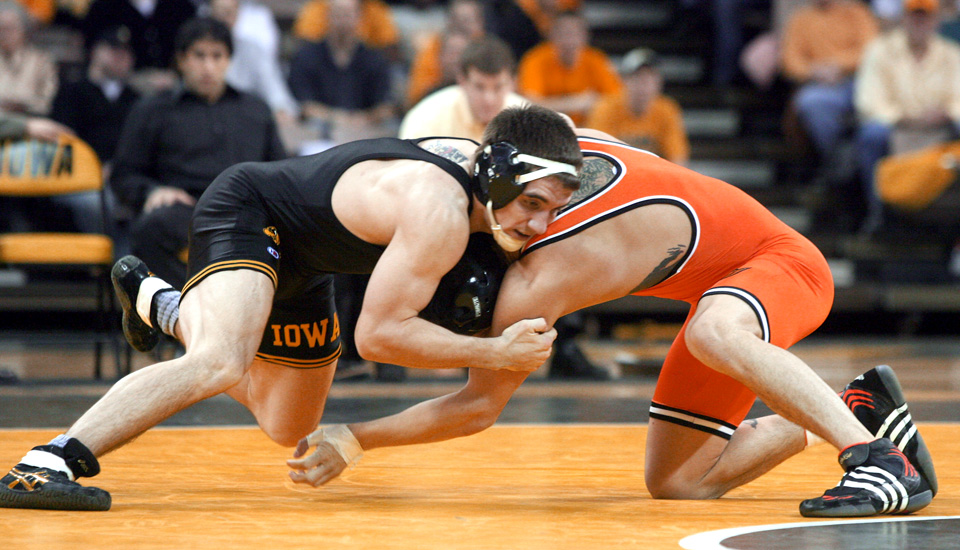
The Wrestling workouts I’ve taken my wrestlers through during the past seven years or so has evolved greatly. The evolution changes as the new generation of wrestlers change as well.
Sometimes we get the hardcore wrestler who wants to go hard and succeed with all his might and he truly lives and breathes wrestling. This is the wrestler we need to watch carefully so he does not overtrain. But, on the flip side, this is the wrestler who doesn’t need a scientific program to respond to. He NEEDS and craves the workouts to keep his mental edge.
Other times we find the recreational wrestler (unfortunately) who doesn’t have tons of drive and we need to create workouts that boost his mental toughness along with his strength and speed. We create workouts in order to help him “turn the corner” and become more a warrior.
Some say you can’t teach mental toughness, others say you can. I agree on BOTH ends, it all depends on who you are training as each wrestler is different. When we need a wrestler to improve his mental toughness we reduce rest periods or eliminate them altogether, we make him run faster or race against others to get used to competing, when the workout is supposed to be “over” he gets some overtime action with something extra like Prowler work and battling ropes.
We keep his psychological spirits high and give positive feedback so he knows we saw his efforts and we understand he took it to the next level.
The wrestler who has no rest days and sometimes trains twice a day, once with us and another wrestling workout, we perform submax efforts on most sets allowing for less aggravation to his recovery / nervous system. We include more recovery work during the workout as well as carefully watching if he fades in any of the areas below:
- strength
- speed
- conditioning
- excitement towards training
If any of the above areas are faltering we cut back ASAP and often times try to catch this before it even happens. Nothing is written in stone as each wrestler is different. Below, is some video footage of our college wrestlers. The workout is upper body focused as their legs take a beating from daily wrestling, their collegiate workouts which tend to be lots of power cleans, squats and deads as well as sprints.
More leg work will make them weaker, slower and worst at wrestling. In season, the most important thing is their ability to wrestle. Their sets were not taken to failure during these workouts, except their last drop set of chain push ups. All other sets were around 75-85% effort, which is enough to keep them improving, yet not so much to interfere with their ability to wrestle.
Here is their workout in detail to give you an idea of an upper body focused workout. Remember, these are experienced lifters AND high level wrestlers. Don’t copy this workout, instead, learn from the methods and apply what is best for you or your team.
1) Warm up with calisthenics, soft tissue work, jumping rope and light 1 arm Kettlebell carries (NOTE: soft tissue work is performed before, during & after ALL workouts)
2) All 4 rounds performed with no rest between sets
- 2A) Chain Push Ups 4 x submax effort on sets 1 - 3, drop set on final set (20, 40, 60 & 80 lbs of chains)
- 2B) rope climb x 12-15’
3) All 4 rounds performed with no rest between sets
- 3A) Double Kettlebell Push Presses 4 x 6 reps
- 3B) 1 Arm Dumbbell Rows 4 x 6 - 8 reps
4) All 3 rounds performed with no rest between sets
- 4A) Kettlebell farmer walks (moderate weight) 3 x 150’
- 4B) band face pulls 3 x 10-15 reps
Finished workout with 3 - 4 sets of direct ab work.
As the wrestling season progresses and the wrestlers endure bumps and bruises our training will adapt as well. There are times when the wrestler works his first exercise aggressively and then goes light and basically deloads on the following movements. We communicate before, during and after each workout to get feedback and make adjustments as we go.
The workouts are hard, but, they are also smart. Everyone gets something different. Take these lessons in our wrestling workouts and apply them to how you train wrestlers or ANY athlete for that matter.










